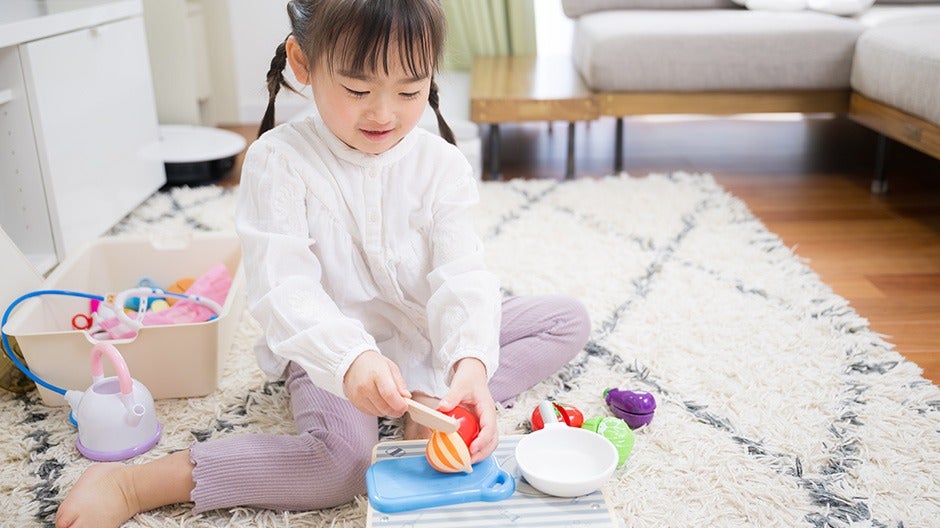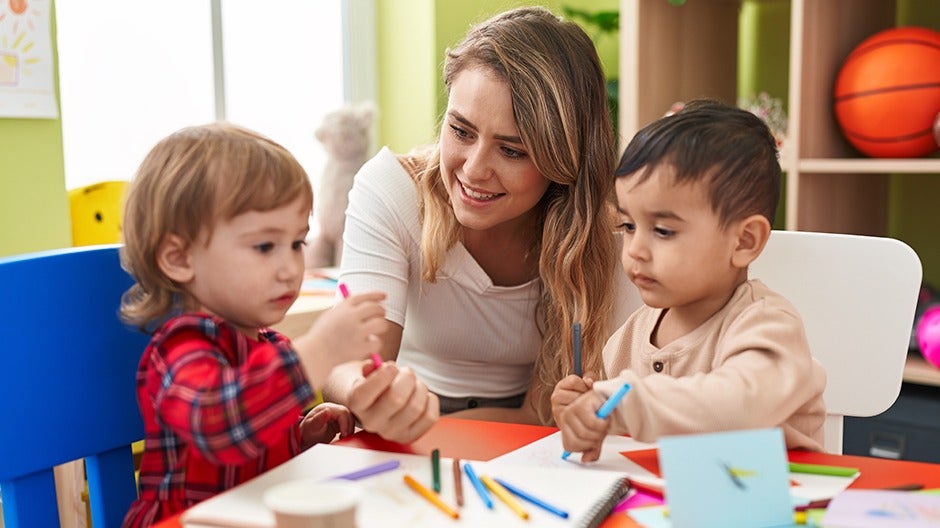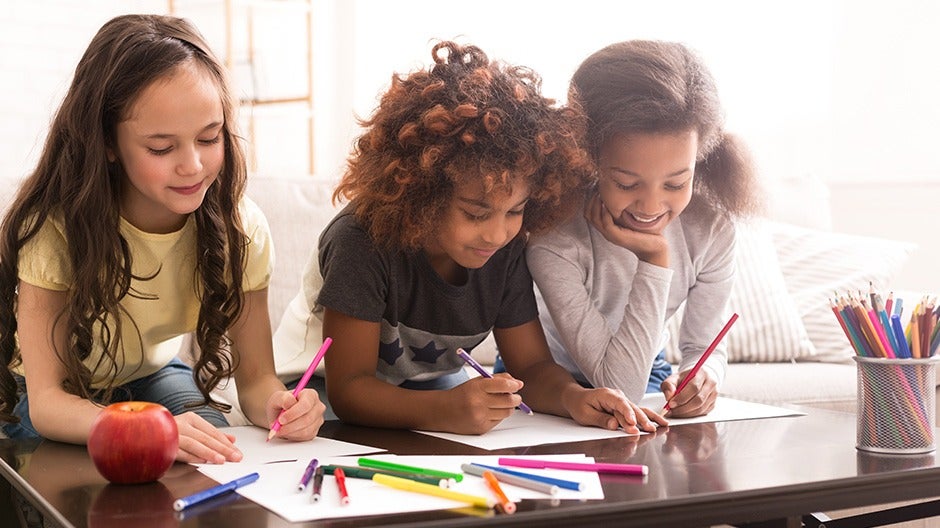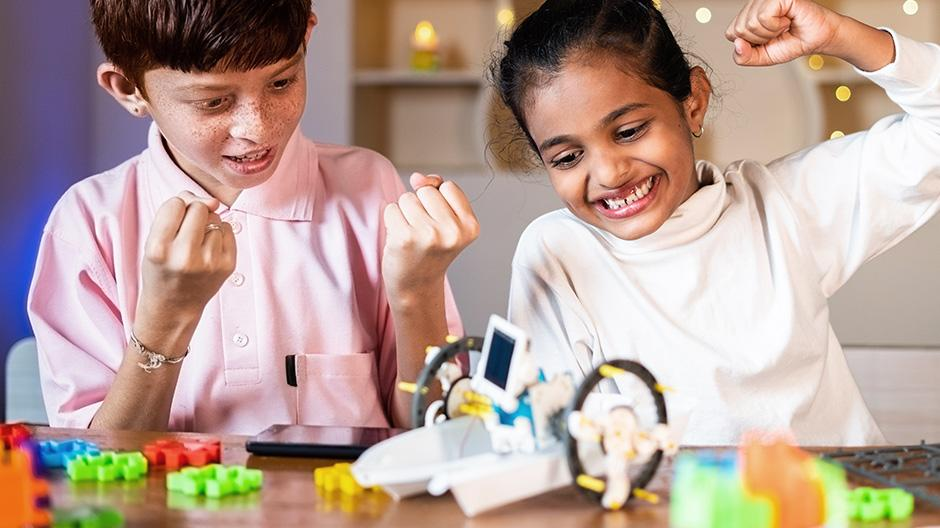The right activities can help kids develop the Core Skill of phonemic awareness, part of building the 5 C’s that help kids thrive in school and life.
Since Core Skills support learning in other areas, giving kids a strong foundation in them helps set them up for long-term success.
Luckily, you can do many fun, easy phonemic awareness activities for kids from preschool through first grade at home. We’ve collected twenty of our favorites!
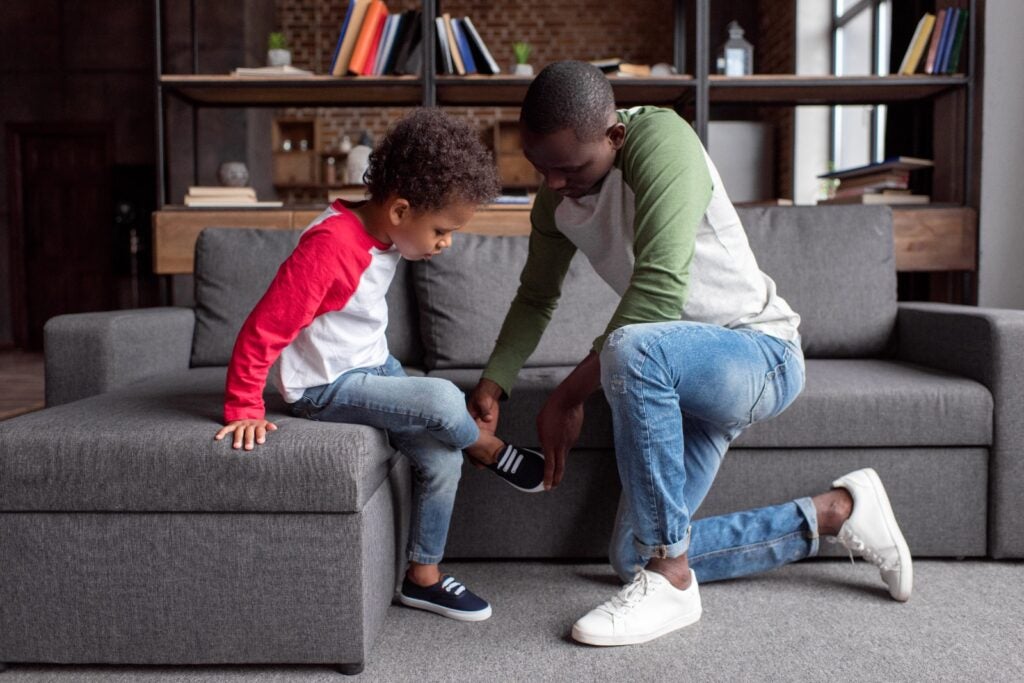
The Short Cut
- Phonemic awareness, an important early learning Core Skill, is the ability to recognize phonemes (sounds like /a/ or /c/) within words
- Phonemic awareness activities can help build your child’s confidence and familiarity with the sounds and letters they are trying to read
- Working on phonemic awareness can be fun! Kids can build it through quick and easy games played at home
- A play-based learning membership can help kids develop phonemic awareness at the right time and in the right way
19 Skill-Building Phonemic Awareness Activities
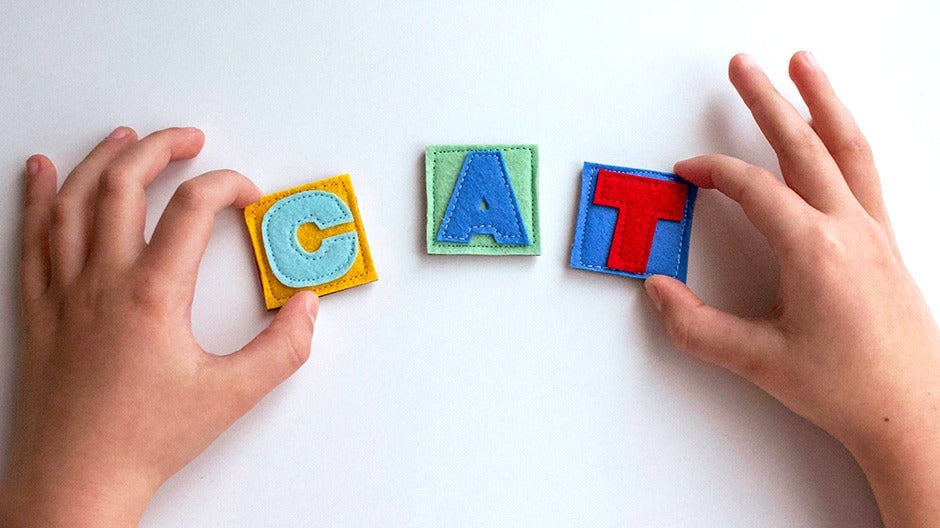
Phonemes are the smallest sound units that make up the words in a language—for example, /c/, /a/, and /t/ are the phonemes that make up the word cat. Phonemic awareness is the ability to perceive and use those individual sounds in spoken words.
Phonemic awareness is a critical precursor to learning to read because it allows kids to understand that sounds represent letters.
If your child can’t understand that cat, car, crawl, and candle have the same beginning sound, they’ll have a tough time identifying that the written letter C begins all of them.
Whether they’re in preschool, kindergarten, or first grade, you can help your child learn phonemic awareness with these fun and easy activities.
Isolation Activities
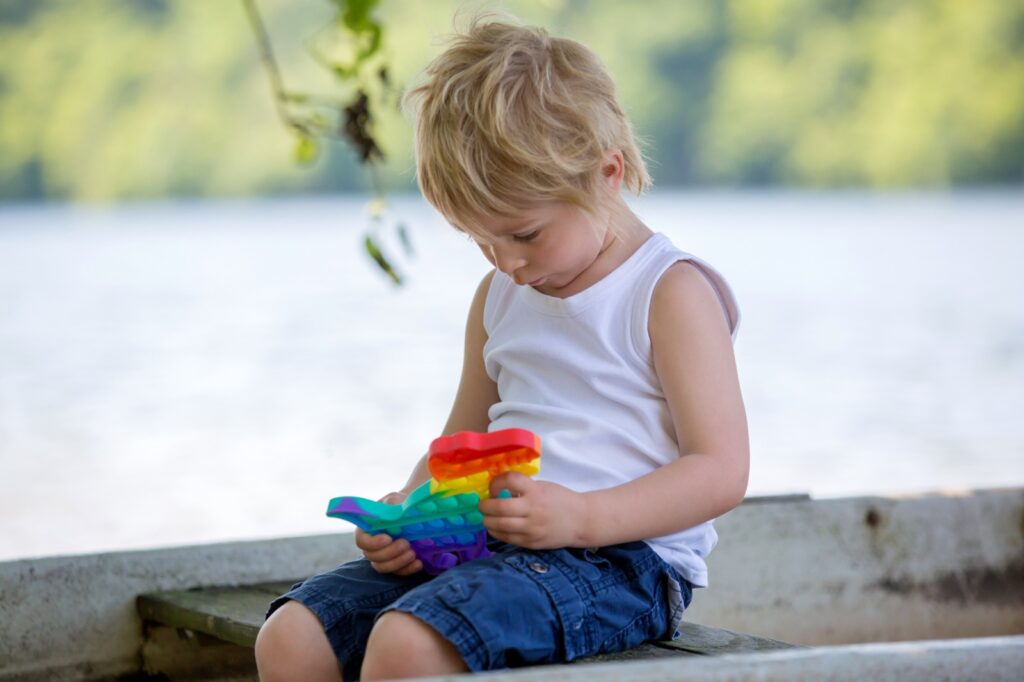
Isolation is a phonemic awareness skill that involves recognizing individual sounds in a word. For example, rat breaks down into three sounds—/r/, /a/, and /t/.
Keep in mind that we’re focused on phonemes (sounds) regardless of how we spell them in written English. So a word that starts with /r/ could be rat or wrench.
1. Sound Scavenger Hunt
A scavenger hunt is a great multisensory activity that can be adapted for almost any environment.
What You Need
- A list of objects to find (using images, words, or both)
- The objects
What to Do
- Give your child a list of objects to find that all begin with the same phoneme. For instance you might use /s/ and list things like socks, spoon, silly putty, and straw.
- Ask them to find the objects.
- Play again using a different phoneme.
2. Empty the Basket
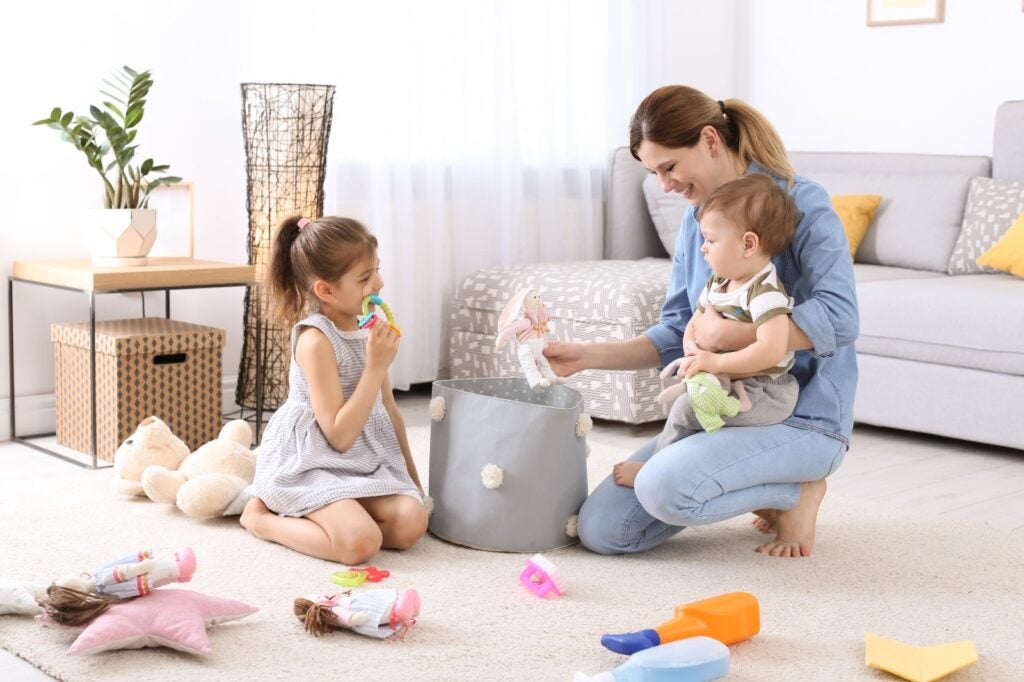
This is a great activity for learning the difference between separate sounds. Your child has to hear the first letter to decide what to remove from the basket.
What You Need
- A basket
- Objects to put inside of the basket (all with different phonemic beginnings)
What to Do
- Ask your child to remove objects using only their first sounds: “Remove the object that begins with /r/.”
- Once they remove it, ask them to tell you what the object is called.
- Then ask them to isolate the beginning sound. (“Right! And what sound does wrench begin with?”)
3. Save the Day!
Add a little imaginary play to your phonemic awareness activities with this exciting game! Try asking your child to identify end phonemes for this one.
What You Need
- Lightweight toys, like small plastic animals
- Masking tape or another tape that won’t pull paint off the wall
What to Do
- Tape the toys to a door or wall.
- Tell your child all of the animals have been stolen from the zoo!
- Ask them to save the animal whose name ends with a specific sound (like /r/).
- See if they can correctly identify that animal (for example, tiger) and bring it back to you.
- Continue asking until all of the animals are saved.
If you don’t want to put tape on your wall, you can also play this game by hiding animals (or any other group of objects) under baskets.
Blending Activities
Blending involves hearing a sequence of separate sounds and combining them into a word (/r/, /a/, and /t/ make the word rat).
4. Human Dictionary

This is a great activity to do with a group of kids. You can get the whole family (or a friend group) involved!
It does require kids to have some letter recognition skills, so it might not be appropriate for the youngest learners.
What You Need
- 10 pieces of paper or poster board
- Markers
What to Do
- Make a list of ten words. You can make them whatever length is appropriate for your kids’ level of experience.
- Write one letter on each piece of paper or poster board.
- Divide up the letters between all of the kids.
- Say a word and have the kids who have the corresponding letters stand in a line in the right order. (So you might say cat, and the three kids with the /c/, /a/, and /t/ sounds would stand together.)
- Ask the kids to all say the word together.
5. Mystery Bag/Box
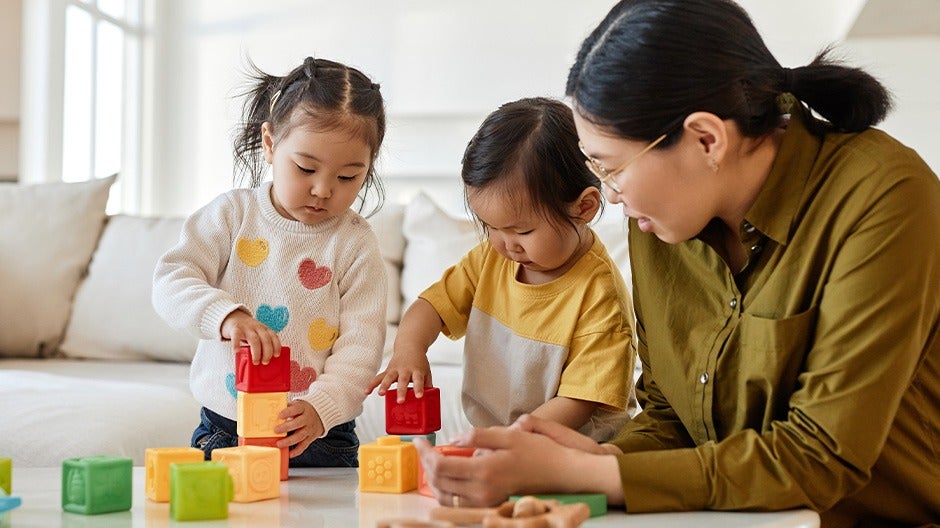
Who doesn’t love a little bit of a mystery?
What You Need
- A bag or box big enough to fit a dozen objects in
- Objects that will fit in the bag or box
What to Do
- Find objects around your home that have simple names, like book, hat, and ball.
- Place them all in the bag or box.
- Ask your child to put their hand in the bag or box without looking. Tell them you’re going to say the name of one of the objects, but segment the sounds. For example, say, “I’m going to give you the sounds of one of the objects. See if you can find it! Bbbbbbbbb ooooooooo kkkkkkkkk.”
- Once they find the correct object, they can pull it out, and then you can play again!
6. Name Game
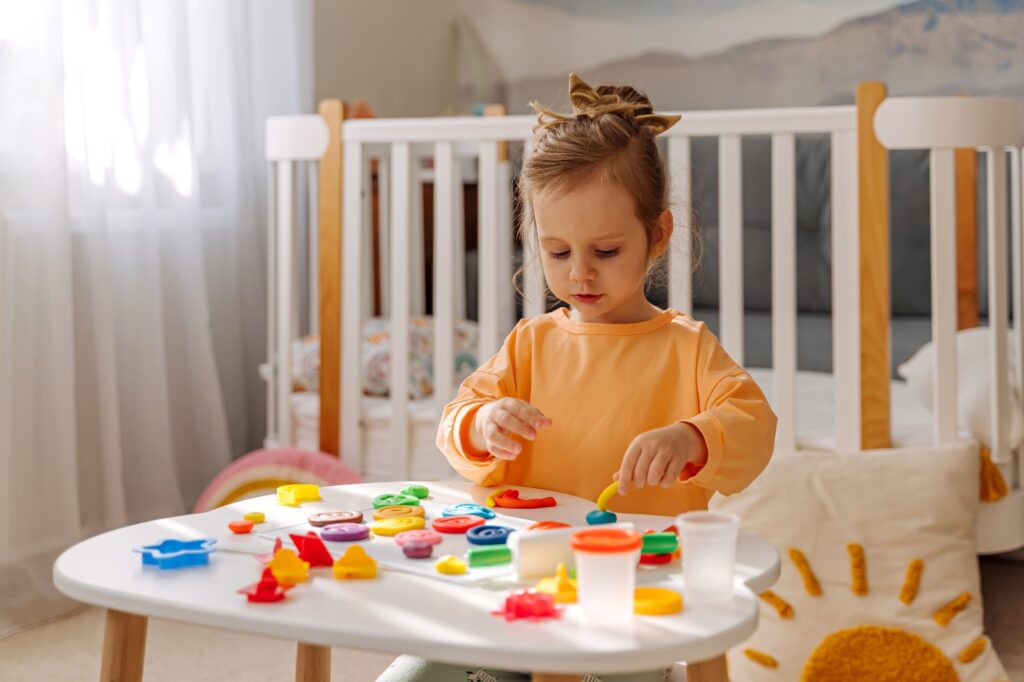
A variation on the classic guessing game 20 Questions.
What You Need
- Nothing!
What to Do
- Ask your child to guess the name of the person you’re thinking of by giving them the beginning and ending sounds. For instance, if you’re thinking of Daddy, you would say, “I’m thinking of someone whose name begins with an /d/ sound and ends with an /ee/ sound.”
- If this is tough for your child, give them fun hints like, “I’m thinking of someone whose name begins with an /d/ sound and ends with an /ee/ sound. They love making chocolate chip cookies and you love eating them!”
Segmentation Activities
Segmentation is breaking down a word into its individual sounds and counting how many there are (for example, rat is made of three sounds).
7. Sound Boxes
Also called Elkonin boxes, named after one of the first psychologists to research phonemes, these are linked boxes drawn on a piece of paper (or on a white board).
The number of boxes corresponds to the number of phonemes in the word you’re working on.
What You Need
- Paper (or white board)
- Pen
- A “sound indicator” object like a penny, rock, or plastic brick that fits into the box
- Cut out, drawn, or printed images
What to Do
- Draw some Elkonin boxes with varying numbers of linked boxes that you can use for words of different lengths.
- Give an Elkonin box to your child.
- Give the sound indicator to them too.
- Show your child one of the pictures.
- Ask them to name what they see.
- Then ask them to slowly separate the phonemes, placing the object into each box as they move from one sound to the next. (Cat would go with an Elkonin box with three linked boxes, and the child would move the object from box to box as they sounded out the word.)
This is a great classroom activity too! Phonemic awareness for kindergarteners might look a little different though. If your kids are writing letters, you can give them a pencil (or dry erase marker) and ask them to write the phoneme sounds—one in each box.
8. Missing Sound Playing Cards
This is another great game for kids who are already identifying some written letters. Make sure the card words are close to each other in terms of sounds, like cat, bat, hat, mop, top, and hop.
What You Need
- Blank cards
- Pencil or foam letters
What to Do
- To set up for the activity, draw a simple image at the top of each card and spell out a corresponding word at the bottom, minus the first sound.
- Give each child a group of similar words, such as cat, bat, and hat. (In this case the cards would all read “at,” with the image at the top providing a clue to what the word is.)
- Using a pencil or foam letter, ask the kids to put the correct sound at the start of each word.
- Then ask them to say each of the words, one after another, making note of the segmentation between the first sound and the rest of them.
9. Poppit Play
You know those fidget toys that are made of soft plastic and are filled with raised bubbles that you can push through from one side to the other? These are a great way to teach segmentation too!
What You Need
- Poppit toy
- Cut out, drawn, or printed images
What to Do
- Show your child one of the images.
- Ask them to say the corresponding word.
- Ask them to segment the word into separate phonemes by clicking down on one bubble for each sound. (For example, cat would be /c/, click, /a/, click, /t/, click.)
10. Play Dough Wordplay
This is another great multisensory activity, this time using tactile as well as auditory skills. Kids love to smash the play dough flat!
What You Need
- Play dough
- Cut out, drawn, or printed images
What to Do
- Ask your child to roll the play dough into a bunch of little balls.
- Show them one of the images.
- Ask them to say the corresponding word.
- Ask them to segment the word into separate phonemes by smashing down one ball of dough for each sound (/c/, smash, /a/, smash, /t/, smash).
Deletion Activities
Deletion is the ability to remove a sound in a word to create a new one (removing /s/ from stop to create top).
Deletion skills are challenging for some kids.
It’s not always easy to understand how the absence of part of something changes the thing itself. Your child may not be ready to explore deletion until they’re in first grade.
When they’re ready, here’s a list of 10 good words for phoneme deletion activities:
- Blow (becomes low)
- Bread (becomes red)
- Click (becomes lick)
- Flake (becomes lake)
- Slow (becomes low)
- Snail (becomes nail)
- Spin (becomes pin)
- Spot (becomes pot)
- Stop (becomes top)
- Trip (becomes rip)
11. Block Removal
If your child likes playing with blocks and vehicles, this activity may work well for them!
What You Need
- Blocks
- Toy vehicle, like a dump truck
What to Do
- Place one block on the floor for each phoneme in a word (for example, four blocks for stop).
- Ask your child to “drive” their vehicle to the first block.
- Name the blocks: “These blocks are the sounds in stop.” You can tap the blocks and sound them out to help.
- Ask your child to take away the /s/block using their vehicle.
- See if they can now identify the new word. (You can help them by tapping the blocks and sounding out again.)
- After they identify the new word, set up another set of blocks and do it again.
12. Karate Chop
A variation on the Block Removal game, this one gives your child the opportunity to break away the beginning phoneme in a word.
What You Need
- Blocks
- 2 pieces of paper for each round. Both have images on them. One is an image of an object (like snail) and the second is an image of an object representing that word minus the first sound (a nail).
What to Do
- Show your child the first word.
- Have them say it.
- Ask them to place blocks in a row, one for each sound.
- Show them the second image.
- Have them say it.
- Ask them to tell you what sound is missing.
- Let them chop the beginning sound off of the row!
Addition Activities
Addition is the reverse of deletion—adding a sound to a word to make a new one (adding /s/ to top to create stop).
13. Addition Cards
A visual game of phoneme additions.
You’ll need one-syllable word cards for this game such as:
- ox
- and
- pot
- ark
You’ll also need phoneme cards that can be added to the one-syllable cards to make new words such as:
- /f/ to make fox
- /h/ to make hand
- /s/ to make spot
- /b/ to make bark
Both sets of cards have letters as well as images on them. So the ox card spells ox but also has an image of an ox, and the /f/ card has the letter f on it, as well as an image of a fox.
What You Need
- Cards
- Images to add to the cards or tools to draw with
- Cut out, drawn, or printed word/image cards
What to Do
- Write short words that can be turned into longer words by adding a single sound, like ox, pot, and ark, on the cards.
- Add images to match the words on the cards (an ox, a pot, etc.).
- Write letters that can be used to extend the words on a second set of cards (f for fox, s for spot, etc.).
- Add images to the letter cards to match the longer words you’d like the kids to make (a fox, a spot, etc.).
- Place the word cards on the table.
- Ask your child to say each word.
- Then show your child one letter card.
- Ask them to find the matching word card to make a new word.
- Repeat this with all of the letter cards.
14. Addition Charades
Do this activity with at least three kids. Perfect for your child’s playdate or a classroom!
What You Need
- Nothing!
What to Do
- Ask one child to be the first actor.
- Whisper a word for them to act out, like pin.
- See if the other kids can guess the word.
- Ask another child to join the first.
- Whisper a word for them to act out together that adds a sound to the first word, like spin.
- See if the other kid(s) can guess the word.
- Explain to the kids how adding one sound (/s/ in our example) changed the word. See if they can identify the sound.
- Rotate spots!
For a more advanced version of the game, try adding sounds to the middle or ends of the words too.
15. Addition Game
This is a useful game for passing the time! It can be fun for car rides.
What You Need
- Nothing!
What to Do
- Start by saying a word ending, like at.
- Tell your child you’re going to add a sound to make a new word, then do so (for example adding /c/ to make cat).
- Tell them it’s their turn to add a new sound to at to make a new word.
- Go as many rounds as you can until you run out of words!
Substitution Activities
Substitution is swapping one sound for another to create a new word (replacing /r/ with /b/ in rat to create bat).
16. Sound Spinners
If you’ve got time, you and your child can make the spinners first and then play with them.
What You Need
- Paper plates
- Brass fasteners
- Markers
- Scissors
What to Do
To make the spinner:
- Cut a rectangular window out of one paper plate. (Cut it in the middle of the space just right of the center of the plate. This will be the space for the beginning phoneme.)
- Cut a rectangular flap on the left side of the plate, all the way on the left side, leaving one side attached so it opens like a door.
- Lay the plate with the flap and window on top of a second plate and attach them in the center with a brass fastener.
- Choose a three-letter/three-phoneme word. For example: dog.
- Write the o and g to the right of the window you cut out.
- Inside the window write the d.
- Across from the word, inside the door, draw a picture of a dog.
- Spin the back plate until you have blank spaces inside both the window and the door.
- Write a different letter, like l in the window.
- Draw a log inside the door.
- Continue to do this until the back plate is full. You’ll probably be able to fit four.
To play:
- Make sure the “door” is closed.
- Ask your child to spin the wheel until a letter appears in the window.
- Ask them to sound out each letter and see if they can figure out the word.
- Reveal the picture to see if they’re right!
17. Phoneme Flip Book
You can staple paper together for this one if you don’t have a notebook.
What You Need
- Small spiral-bound notebook
- Scissors
- Pens
What to Do
- Place the spiral side of the notebook on the top and cut the paper inside into three sections, so they each flip separately.
- Write phoneme sounds on each section of the paper in a C/V/C (consonant, vowel, consonant) order. (You can make the vowels a different color and then use this notebook for letter lessons too!)
- Ask your child to flip the book to any group of three sounds and try to figure out the word!
This is another activity that is good for kindergarten-age kids.
18. Pocket Full of Phonemes
Mix and match index cards to create new sounds—and new words! This activity requires some knowledge of letters.
What You Need
- Index cards
- Pocket chart
- Markers
What to Do
- Write one letter on each index card.
- Place three index cards in the bottom pocket to spell a word, like dog.
- Place the rest of the cards in the pockets above.
- Ask your child to make the sounds of the three phonemes to make a word. (/d/ /o/ /g/)
- Then switch one letter out and put another from the top pockets in its place, like changing dog to hog.
- You can talk together about how the different sounds create different words.
19. Name Game
This one is a great classroom activity during transition times, like lining up to go to the lunchroom or calling attendance first thing in the morning. But you can also use it at home too, and it’s a great substitution activity for younger kids.
What You Need
- Nothing but your eager kid(s)!
What to Do
- Tell your kid(s) that you’re going to call their name(s), but that you’re going to substitute a different first sound for their names—like /m/
- Then begin call names: Malice, Mennifer, Man, Milliam, and so on
- See if they can figure out it’s them!
- If you’re doing this at home, you can have fun doing something together, like cooking, and continuing to switch up the first sound of your child’s name. (“Okay, Meff, time to put in the flour. Now you can mix it up, Beff. And now, Teff, you can pour it in the pan!”)
- Once they’ve figured it out, invite them to do the same with your name!
Helpful Tips
You can use all four of these tips in the activities we’ve just suggested, but you can also use them at any point during your day! They’re fast and easy—and every little bit of practice helps!
- Speak one sound at a time. Exaggerate them. If you’re getting your child ready for school, you can ask them, “Do you want to wear your sssssssssneakers or your bbbbbbbbboots?”
- Make phonemic awareness fun! Make silly faces as you play. Make up words and songs. Act out the tongue twisters. Dance to those made-up songs. Have a blast and your child will too!
- Help your child hear separate sounds. Slow down and point them out. As you walk through the supermarket, you might say, “Do you want ggggggrapes? Do you hear the /g/ sound before the /r/?”
- Read with phonemes in mind. As you read a book before bed, choose a few phonemes to focus on in the story. Maybe you look for all of the /f/ sounds one night and all of the /d/ sounds the next.
Phonemes Are Fun to Learn with Begin!
Phonemic awareness activities make a big difference in helping your child build the foundation they need to learn to read.
And we can help! Our age- and stage-matched learning membership incorporates literacy learning every step of the way.
Whether kids are building phonemic awareness in our award-winning HOMER early learning app or cultivating curiosity with exciting stories about the world, they’ll be on their way to reading success—and much more!—fast.
Take our online quiz today to discover which stage of our membership is best for your family!
–
Extra
Although phonemic awareness is sometimes used interchangeably with phonics, they are not the same skills.
Think about them this way: phoneme awareness uses our ears (just hearing sounds), while phonics uses both our eyes and ears (hearing sounds and seeing their written letters).
There are six basic types of phoneme awareness:
- Isolation: recognizing individual sounds in a word (rat breaks down into three sounds—/r/, /a/, and /t//).
- Blending: hearing a sequence of separate sounds and being able to combine them (/r/, /a/, and /t/ make the word rat).
- Segmentation: breaking down a word into its individual sounds and counting how many there are (rat is made of three sounds).
- Deletion: the ability to remove a sound in a word to create a new one (removing /s/ from stop to create top).
- Addition: the ability to add a sound to a word to make a new one (adding /s/ to top to create stop).
- Substitution: swapping one sound for another to create a new word (replace /r/ with /b/ n rat to create bat).
If you’re working with younger, preschool-age kids, you can ask them to flip the book and sound out the phonemes with them slowly.
Then, they can put them together to figure out the word! Or, if you’ve got images of each word, they can flip the pages to a word, you can show them the image, and then they can sound out the phonemes.




